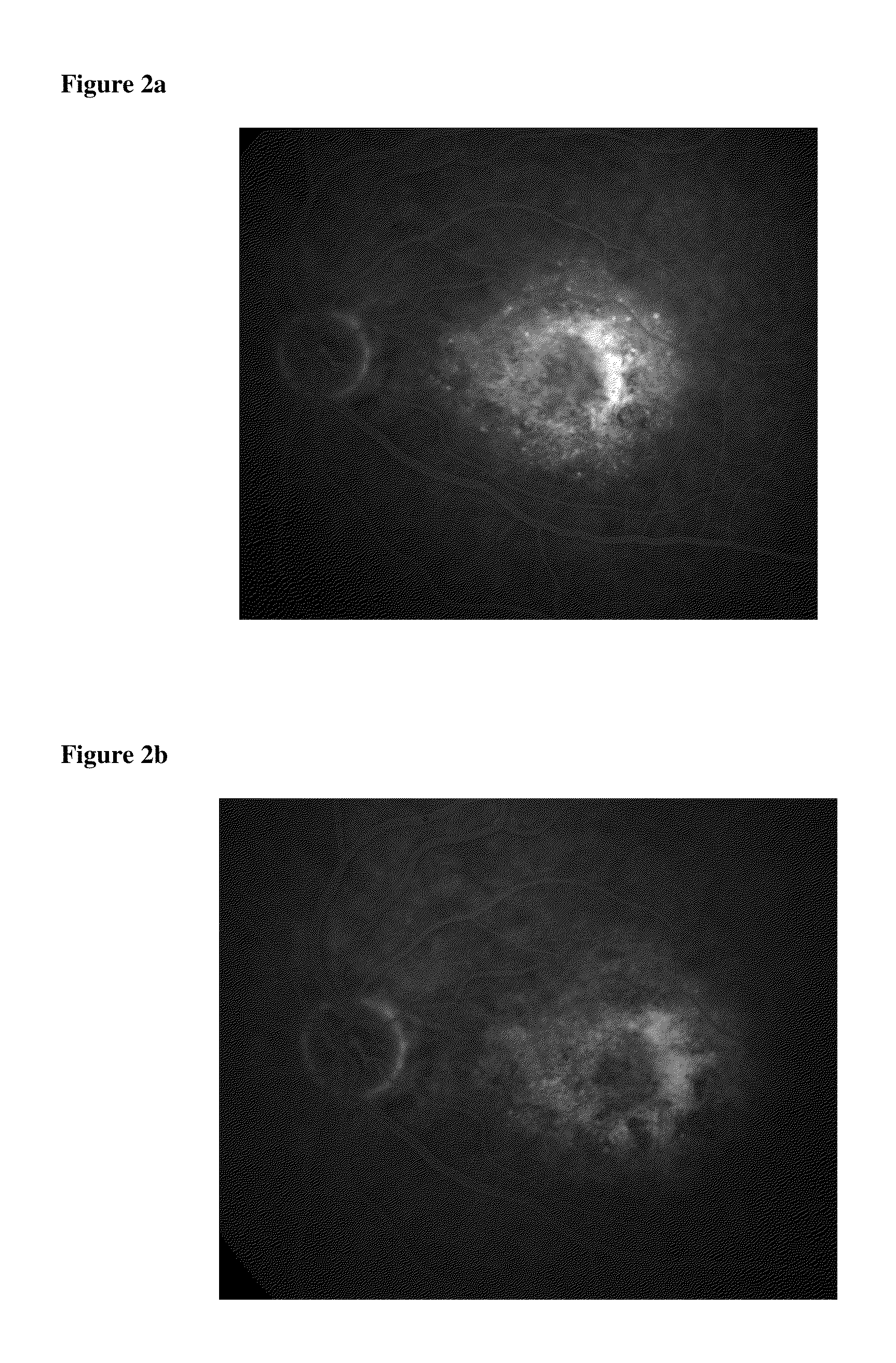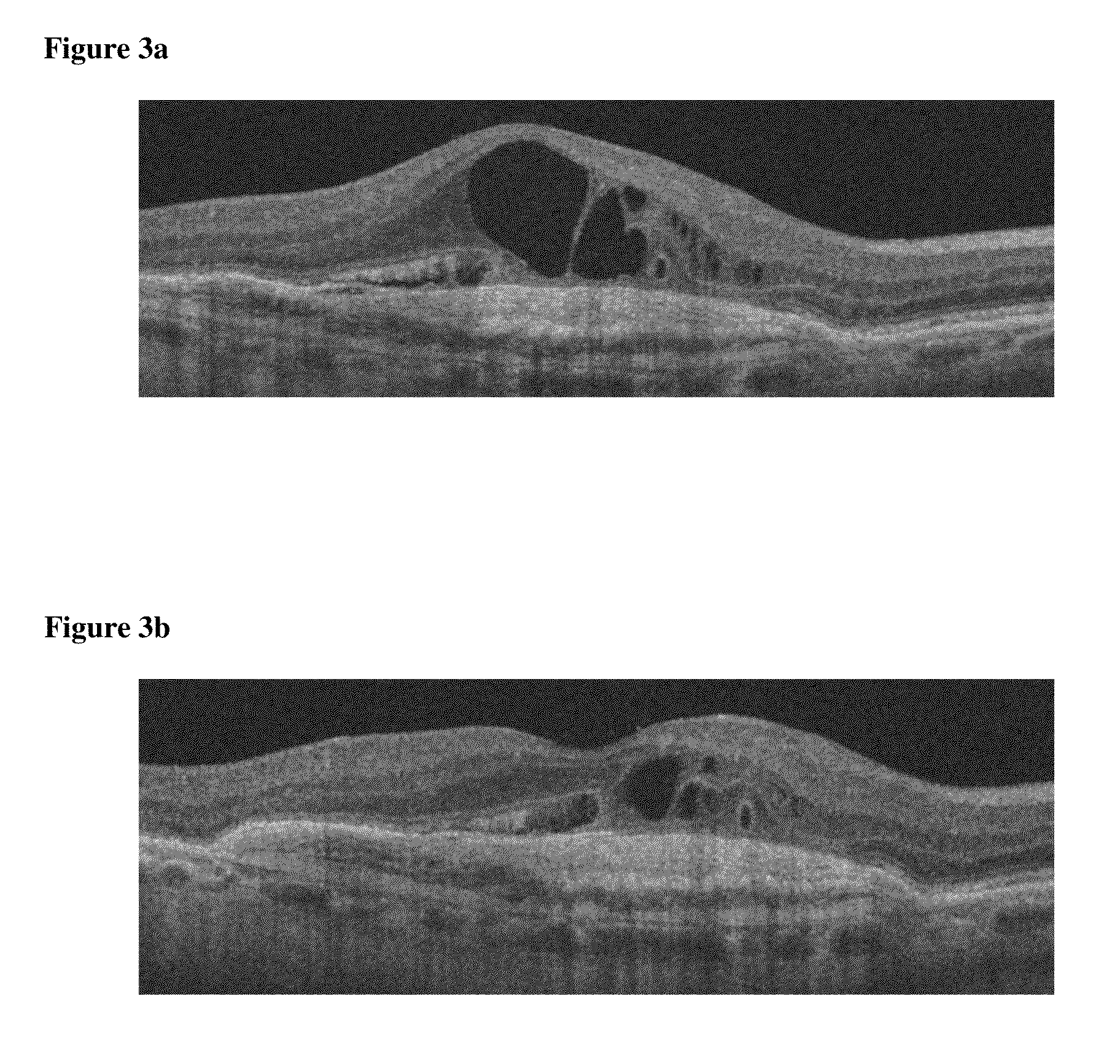Treatment for angiogenic disorders
- Summary
- Abstract
- Description
- Claims
- Application Information
AI Technical Summary
Benefits of technology
Problems solved by technology
Method used
Image
Examples
example 1
Case Study of Patient 1
[0048]Patient 1 was presented demonstrating lesion activity as measured by active fluid within or under the retina, confirmed by OCT (optical coherence tomography) and fluorescein angiography. Patient 1 had previously received 21 intravitreal injections of either Lucentis® or Avastin®, but had chronic subretinal fluid. The patient provided written consent following a thorough discussion of relative risks and benefits of the potential use of Macugen® in a combination format with simultaneous administration of intravitreal Avastin®.
[0049]Macugen® was first injected intravitreally (0.3 mg in 0.09 cc). Optic nerve perfusion and intraocular pressure were assessed. Upon restoration of adequate perfusion and pressure stabilization, the eye was once again sterilized and a second intravitreal injection of Avastin® (1.25 mg in 0.05 cc) was given. Optic nerve perfusion and intraocular pressure were reassessed, and the patient was scheduled for routine follow-up. Followin...
example 2
Case Study of Patient 2
[0050]Patient 2 had 33 consecutive treatments with intravitreal ranibizumab with chronic residual subretinal fluid as defined on OCT imaging (FIG. 1a). Following a single simultaneous combination-treatment with pegaptanib and bevacizumab (protocol), there was complete resolution of subretinal fluid and concomitant visual improvement (FIG. 1b). Following that single protocol treatment, Patient 2 who had chronic disease for more than 2 years (while on q4-6 week mono-therapy), remained stable without any fluid recurrence with simple q3 month prophylaxis therapy. This suggests a fundamental change in the underlying disease biology induced by this new treatment protocol. This was confirmed by OCT and fluorescein angiogram results (FIGS. 2a and 2b).
example 3
Case Study of Patient 3
[0051]Patient 3 had chronic fluid in the sub-retinal and sub-RPE (retinal pigment epithelium) space following repeated mono-therapy injections of either ranibizumab (11 times) or bevacizumab (3 times). Following a single protocol injection there was resolution of the fluid in the sub-RPE space.
PUM
| Property | Measurement | Unit |
|---|---|---|
| Mass | aaaaa | aaaaa |
| Mass | aaaaa | aaaaa |
| Mass | aaaaa | aaaaa |
Abstract
Description
Claims
Application Information
 Login to View More
Login to View More - R&D
- Intellectual Property
- Life Sciences
- Materials
- Tech Scout
- Unparalleled Data Quality
- Higher Quality Content
- 60% Fewer Hallucinations
Browse by: Latest US Patents, China's latest patents, Technical Efficacy Thesaurus, Application Domain, Technology Topic, Popular Technical Reports.
© 2025 PatSnap. All rights reserved.Legal|Privacy policy|Modern Slavery Act Transparency Statement|Sitemap|About US| Contact US: help@patsnap.com



